Maximilian armor is associated with, and possibly first made for the Emperor Maximilian I. It is a modern-day term pertaining to the style early 16th-century German plate armor. Made of plain steel, highly polished, and called ‘white armor’, it was decorated with many grooves that were instrumental in deflecting the points and blades of attackers.
This period followed the plain steel surfaces of 15th-century armor and preceded the elaborate decoration, coloring, engraving, and other techniques of Renaissance armor.
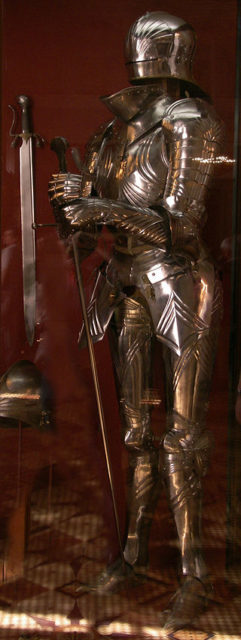
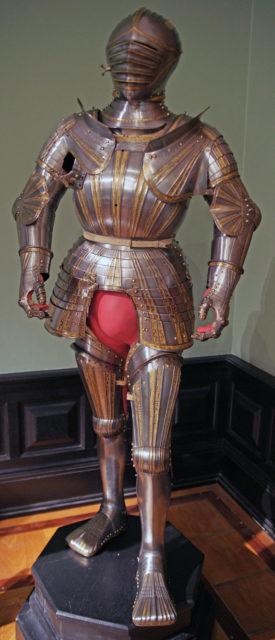
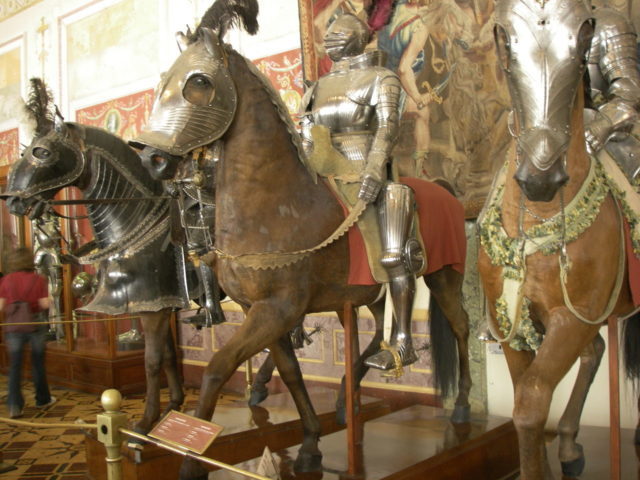
The armor was characterized by engraving, sharply peaked breast and back plates, work taken from woodcuts, the armed helmet – closed helmets with visors that were small fan-shaped with narrow and parallel ridges – often covering most of the harness (but never the greaves), and squared foot coverings.
Another possible origin of the armor’s name is that it is associated with Maximilian II: in 1557, the last Maximilian armor was made specifically for him, seventeen years after the last general use of the armor.
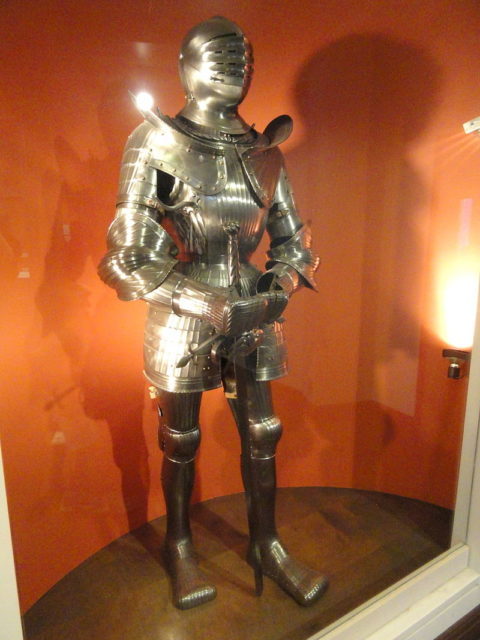
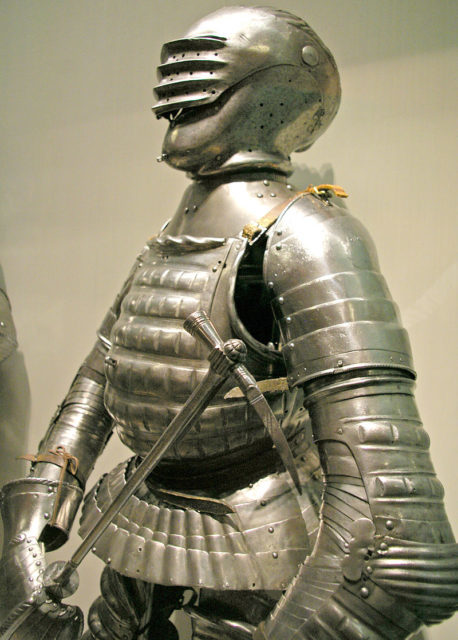
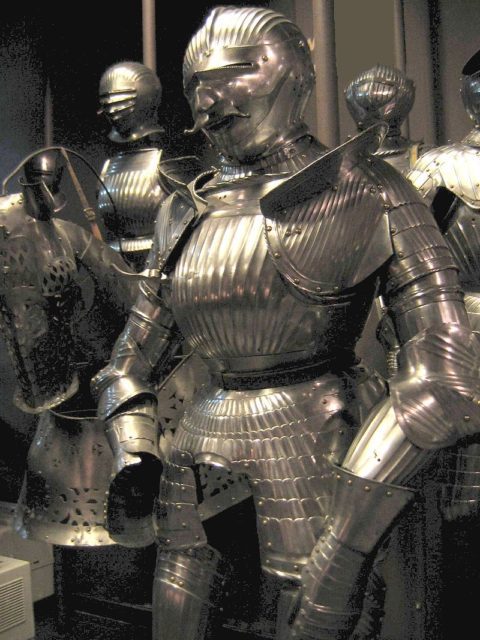
The decorative armor, with its engravings and fluting, was designed to emulate the pleated clothing that was the preferred style in Europe at the time. Some armor combined long pleat-like grooves with lines of rectangular silhouettes duplicating fashionable materials decorated with slashing or quilting.
In 15th and especially 16th-century Europe, armor was built not only to provide protection to the wearer but also to be visually striking in battle. The trending Maximilian armor combined the curved, smooth Italian style of armor with the German ridged style.
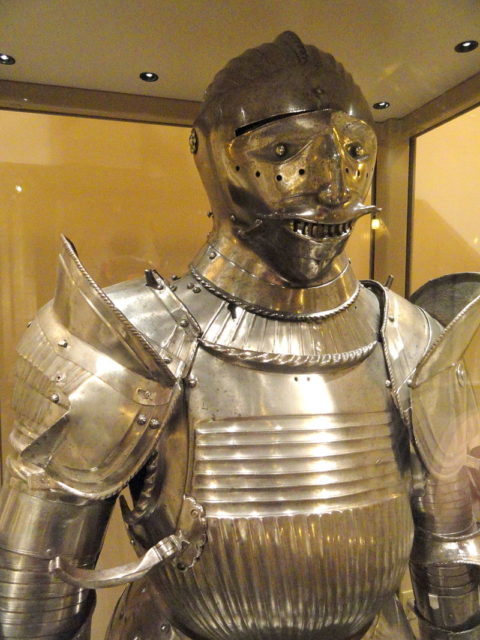
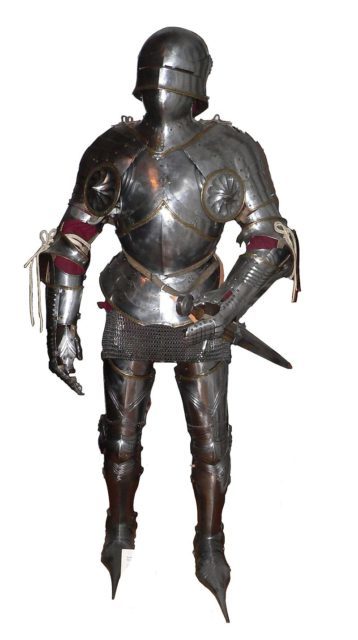
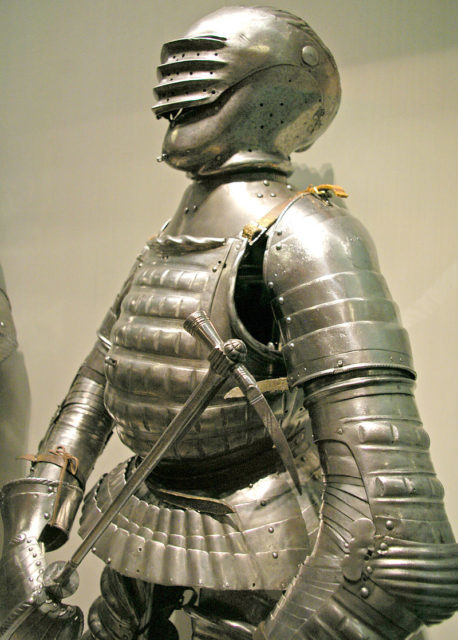
An early style of Maximilian armor was called Schott-Sonnenberg style armor by the historian Oakeshott. This Maximilian style could be worn with a war helmet and with either no fluting or with the wolfzähne (wolf teeth) style fluting.
This transitional style of armor was worn from 1500 to 1520 and the authentic Maximilian armor was worn from 1515 to 1525.
